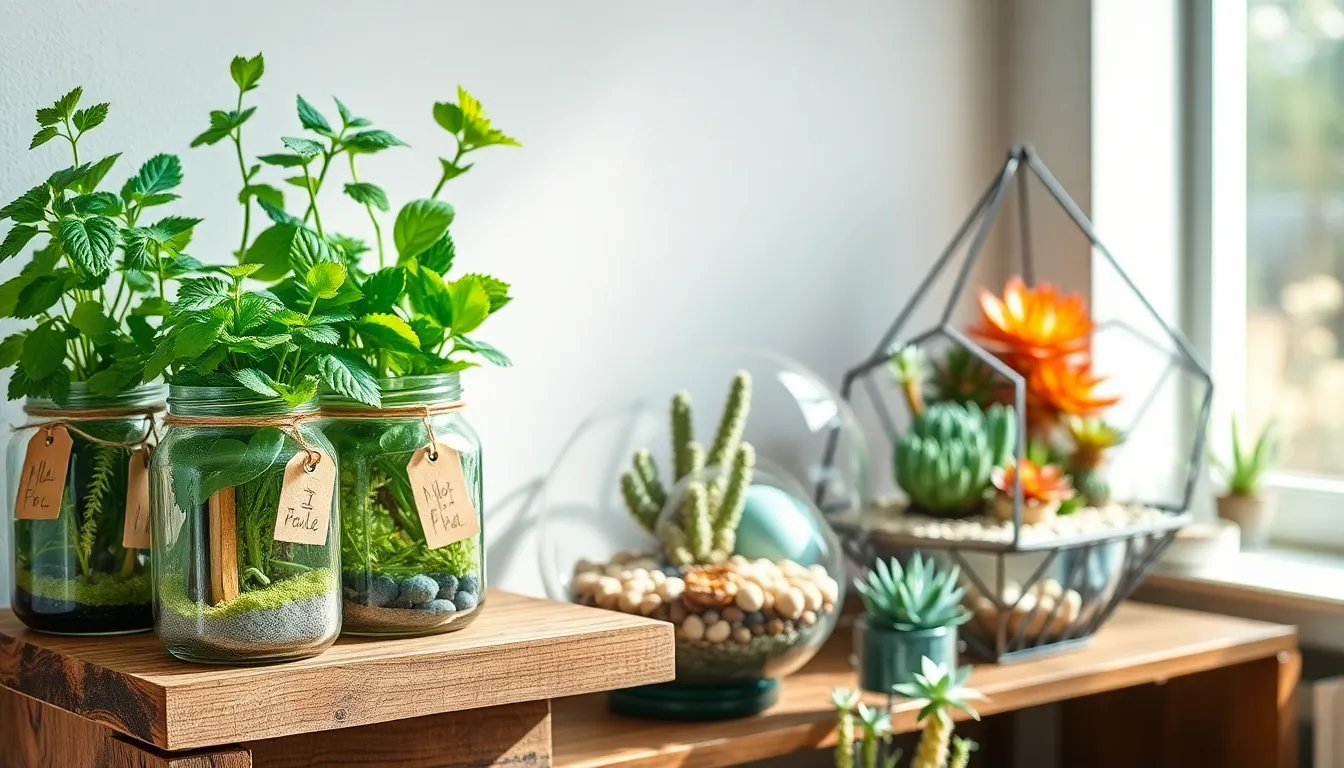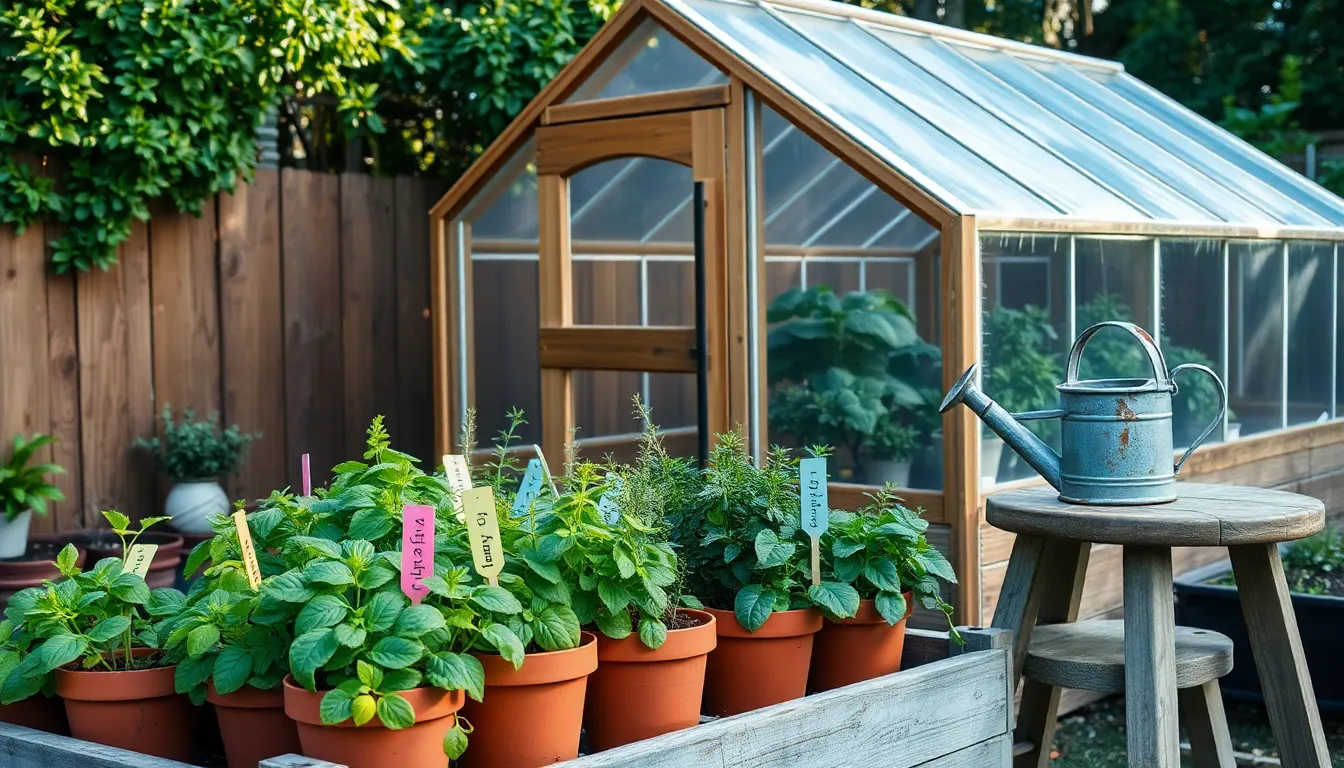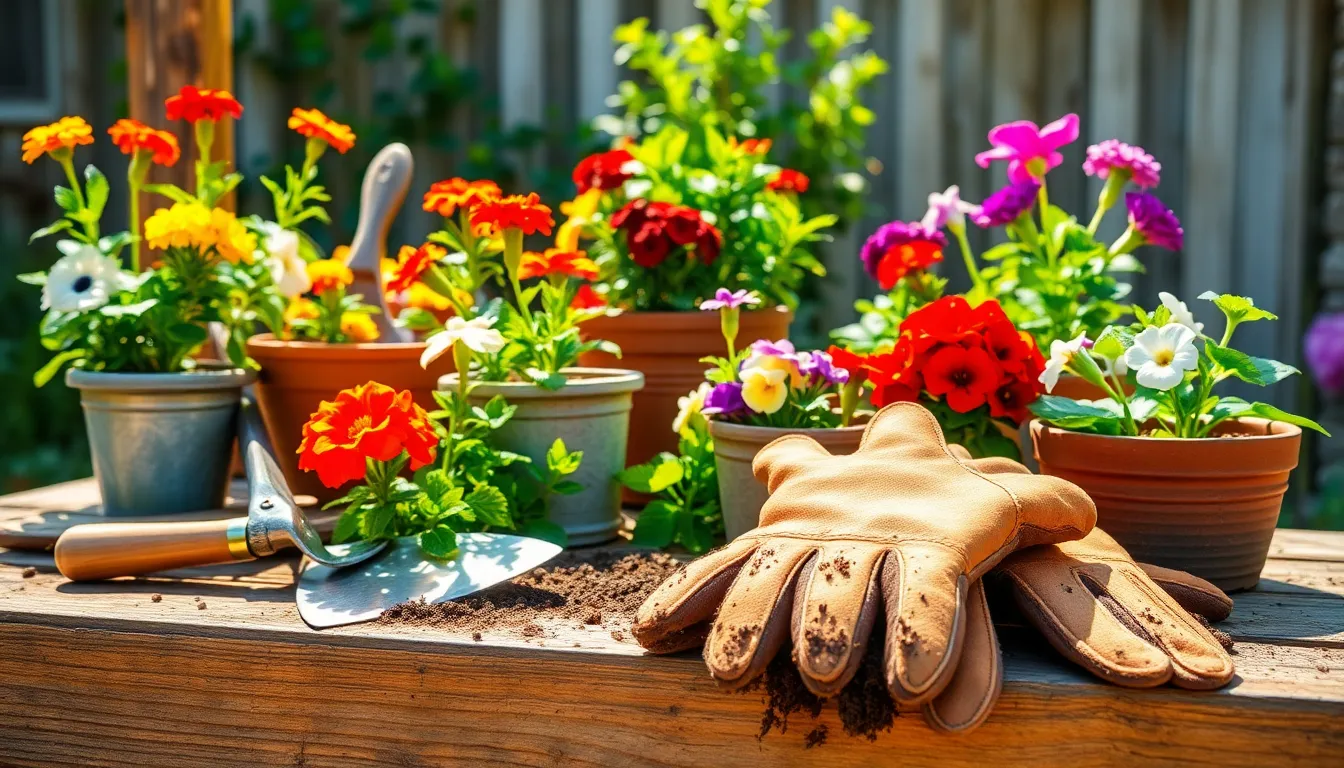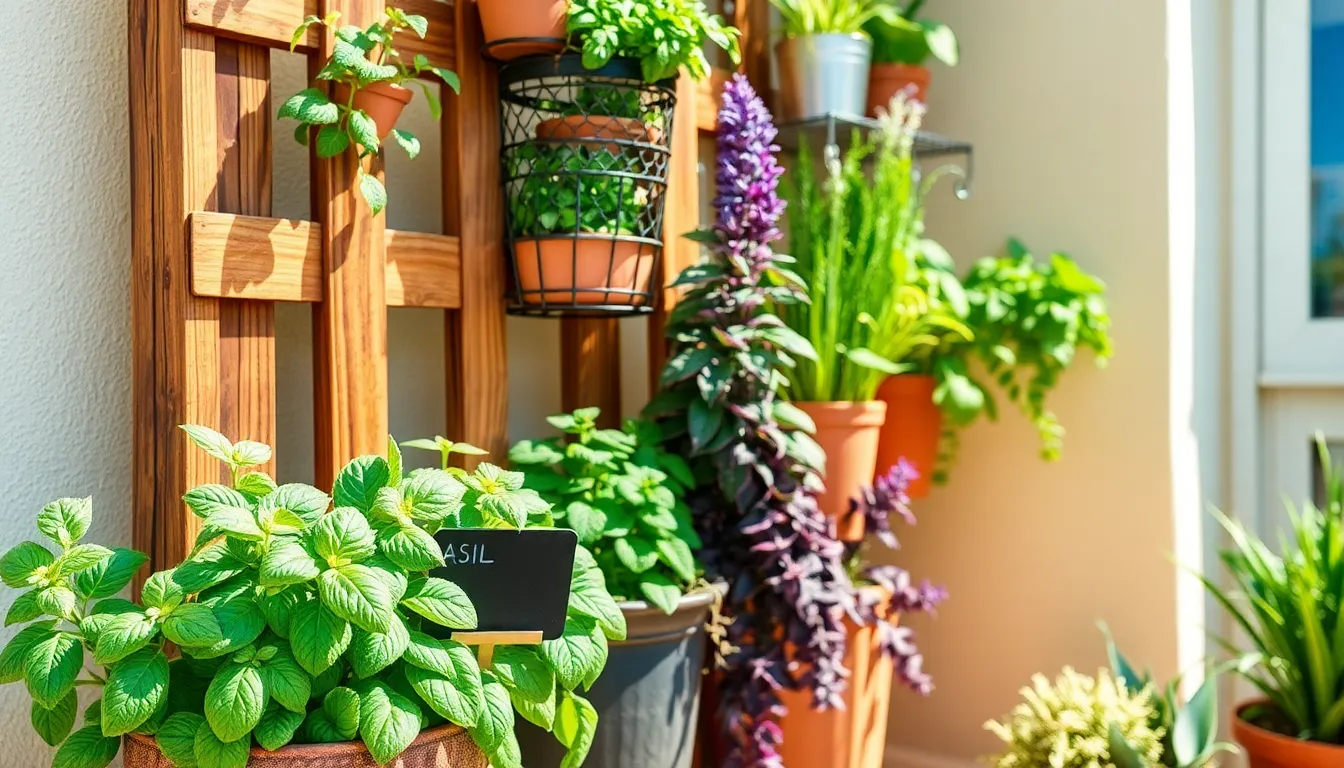Imagine transforming your living space into a lush oasis, where vibrant greens breathe life into every corner of your home. Indoor gardening is not just a hobby; it’s a delightful journey that connects you with nature and offers a sanctuary from the hustle and bustle of everyday life. Whether you’re just starting out or have been nurturing plants for years, there’s always something new to discover and enjoy in the world of indoor gardening. With these projects, both beginners and seasoned green thumbs can find inspiration and practical tips to cultivate their indoor Eden.
In this article, we delve into ten exciting indoor gardening projects that promise to be both productive and rewarding. From creating a mini herb garden on your kitchen windowsill to experimenting with hydroponics, each project is designed to enhance your indoor environment and your gardening skills. You’ll learn how to choose the right plants for your space and gain insights into innovative techniques that can maximize your indoor garden’s potential. With our guidance, you’ll find that nurturing plants indoors is more than just decoration—it’s a fulfilling experience that nourishes the soul.
These projects are not only about growing plants but also about cultivating a sense of accomplishment and well-being. As you explore each project, you’ll discover how to tailor your indoor garden to your lifestyle, making it a seamless and enriching part of your daily routine. Whether you’re looking to grow your own fresh produce or simply wish to add a touch of greenery to your surroundings, this article will equip you with the knowledge and confidence to create your own indoor garden sanctuary. So, let’s embark on this verdant adventure together and unlock the potential of your indoor spaces.
Choosing Ideal Indoor Plants
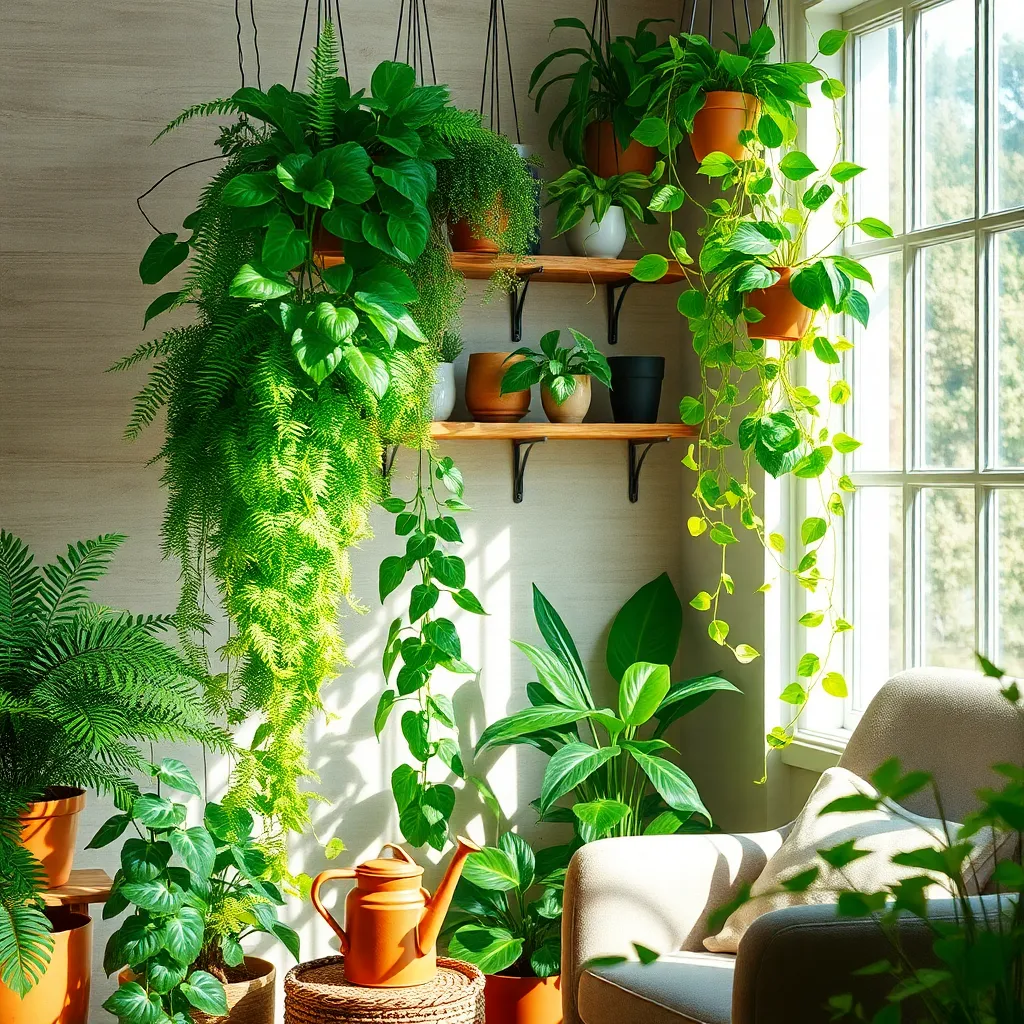
When choosing indoor plants, consider the light levels in your space as this will greatly influence plant growth. Low-light tolerant plants like snake plants and pothos are excellent choices for areas with minimal natural light.
For beginners, it’s important to start with plants that are known for their resilience and ease of care. Succulents, for instance, require minimal watering—typically once every two weeks—making them ideal for those new to plant care.
Advanced gardeners looking to expand their indoor plant collection might explore tropical plants, which thrive in high humidity environments. To mimic these conditions, consider using a pebble tray or a humidifier to maintain the necessary moisture levels.
Ensure your plants are potted in well-draining soil to prevent waterlogging, which is a common issue in indoor gardening. A good choice is a potting mix that includes perlite or sand to aid drainage.
Regularly assess the needs of your indoor plants, as factors such as seasonal changes can affect their water and light requirements. Adjust your care routine accordingly to ensure your plants remain healthy and vibrant throughout the year.
Creating a Kitchen Herb Garden
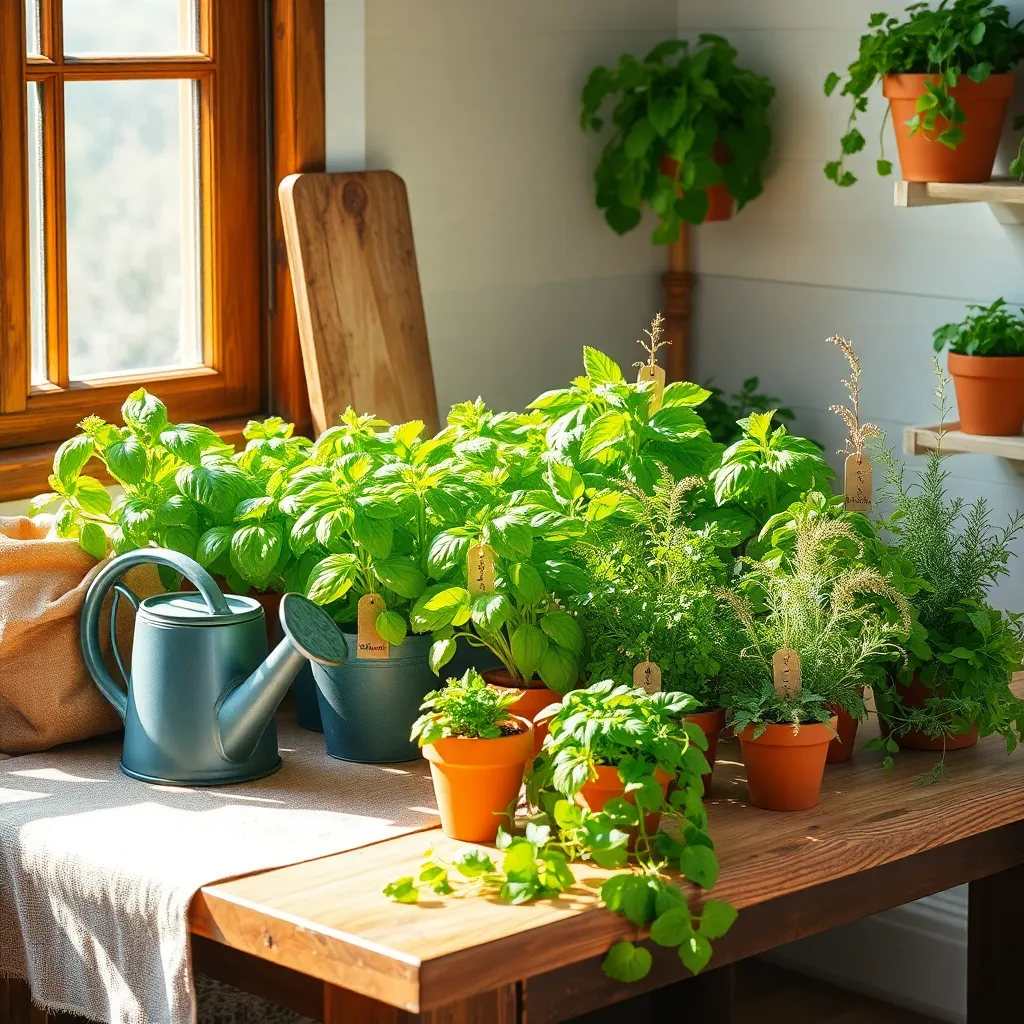
Creating a kitchen herb garden is a rewarding indoor gardening project that brings fresh flavors to your cooking. Start by selecting herbs that thrive indoors, such as basil, mint, and chives, which are known for their adaptability and rapid growth.
Choose containers with good drainage to prevent root rot, and fill them with a high-quality potting mix rich in organic matter. Consistent watering is crucial; aim to keep the soil moist but not waterlogged by watering every few days, depending on humidity levels in your home.
Herbs need plenty of light to grow robustly, so place your containers on a sunny windowsill where they can receive at least six hours of sunlight daily. If natural light is limited, consider using a grow light to supplement and ensure your herbs grow lush and healthy.
For a bountiful harvest, regularly trim or pinch back your herbs to encourage bushy growth. When harvesting, make clean cuts just above a node to stimulate further growth and prevent the plants from becoming woody and sparse.
Building a Vertical Plant Wall
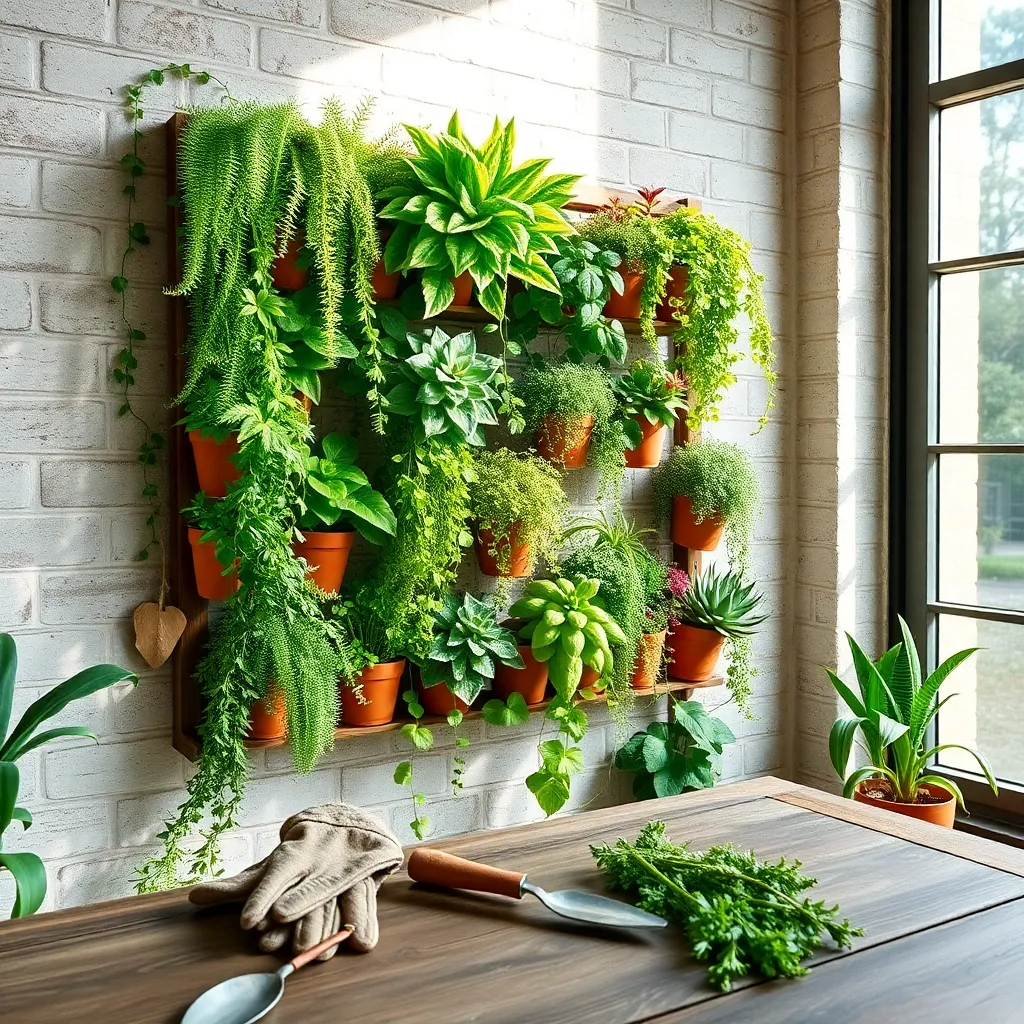
Transforming a bare wall into a lush vertical plant wall can dramatically enhance your indoor space. Start by selecting a suitable wall with plenty of natural light, or install grow lights if needed, to ensure your plants thrive.
For beginners, choose easy-to-care-for plants like pothos, ferns, or spider plants, which are forgiving and adaptable to various light conditions. Ensure each plant has proper drainage by using planters or pockets designed for vertical gardening, which helps prevent root rot.
Advanced gardeners can experiment with a mix of ornamental and edible plants, such as trailing cherry tomatoes or strawberries, to add both beauty and utility. Regularly check the soil moisture, as vertical gardens can dry out faster, and water thoroughly when the top inch feels dry.
To maintain a healthy vertical plant wall, prune regularly to encourage new growth and remove any dead or yellowing leaves. Consider rotating plants occasionally to ensure even light exposure, helping to maintain a balanced and vibrant display.
Starting a Windowsill Salad Farm
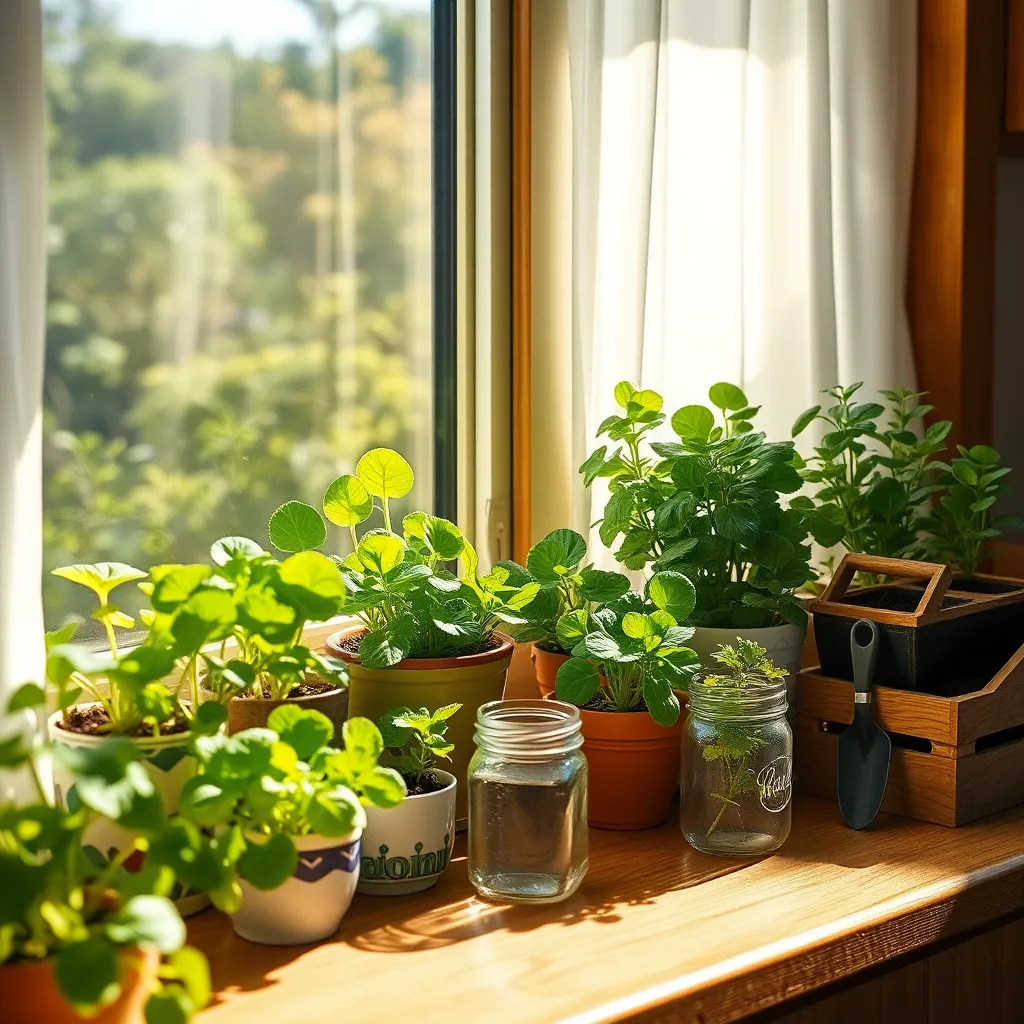
Creating a windowsill salad farm is a delightful way to enjoy fresh greens year-round. Start by selecting easy-to-grow salad greens such as lettuce, spinach, or arugula, which thrive indoors with minimal effort.
To begin, use shallow containers with drainage holes to prevent waterlogging. Fill them with a high-quality potting mix that retains moisture but drains well, such as a mix containing peat moss and perlite.
Position your containers on a sunny windowsill that receives at least 4-6 hours of bright, indirect light daily. If natural light is insufficient, consider using a grow light to supplement, placing it about 6 inches above the plants.
Water your salad greens consistently, keeping the soil evenly moist but not soggy. A simple way to check moisture levels is by inserting your finger about an inch into the soil; if it feels dry, it’s time to water.
For more rapid growth, feed your greens every two weeks with a diluted liquid fertilizer, ensuring they receive the necessary nutrients. Harvest the outer leaves regularly to encourage new growth and maintain a continuous supply of fresh salad greens.
Hydroponic Systems for Beginners
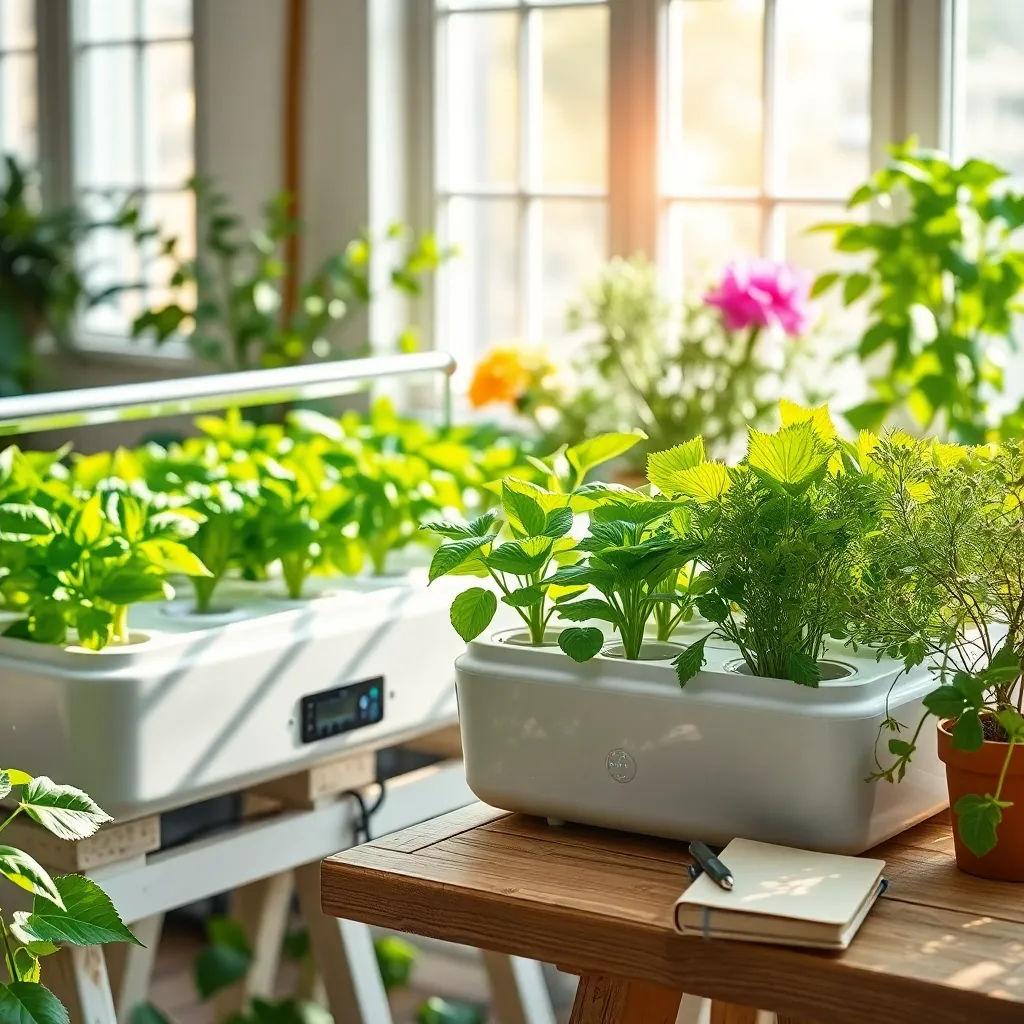
Hydroponic gardening is an innovative approach that allows you to grow plants without soil, making it perfect for indoor spaces. This method involves growing plants in a nutrient-rich water solution, giving you control over the growing environment and reducing pest issues.
To get started, you’ll need a basic hydroponic setup, which can be as simple as a small container and a pump. For beginners, a deep water culture (DWC) system is easy to set up and maintain, requiring just a few components like a container, air pump, and net pots.
Choose plants that thrive in hydroponic systems, such as lettuce, herbs, and strawberries. These plants grow quickly and require minimal maintenance, making them ideal for those new to this gardening technique.
Ensure your plants receive adequate light, either through natural sunlight or grow lights. Placing your hydroponic system near a sunny window or using full-spectrum LED grow lights can significantly enhance plant growth.
Monitoring water pH and nutrient levels is crucial for healthy plant growth. Invest in a pH meter and hydroponic nutrients to keep your plants thriving and avoid nutrient deficiencies.
DIY Indoor Plant Terrariums
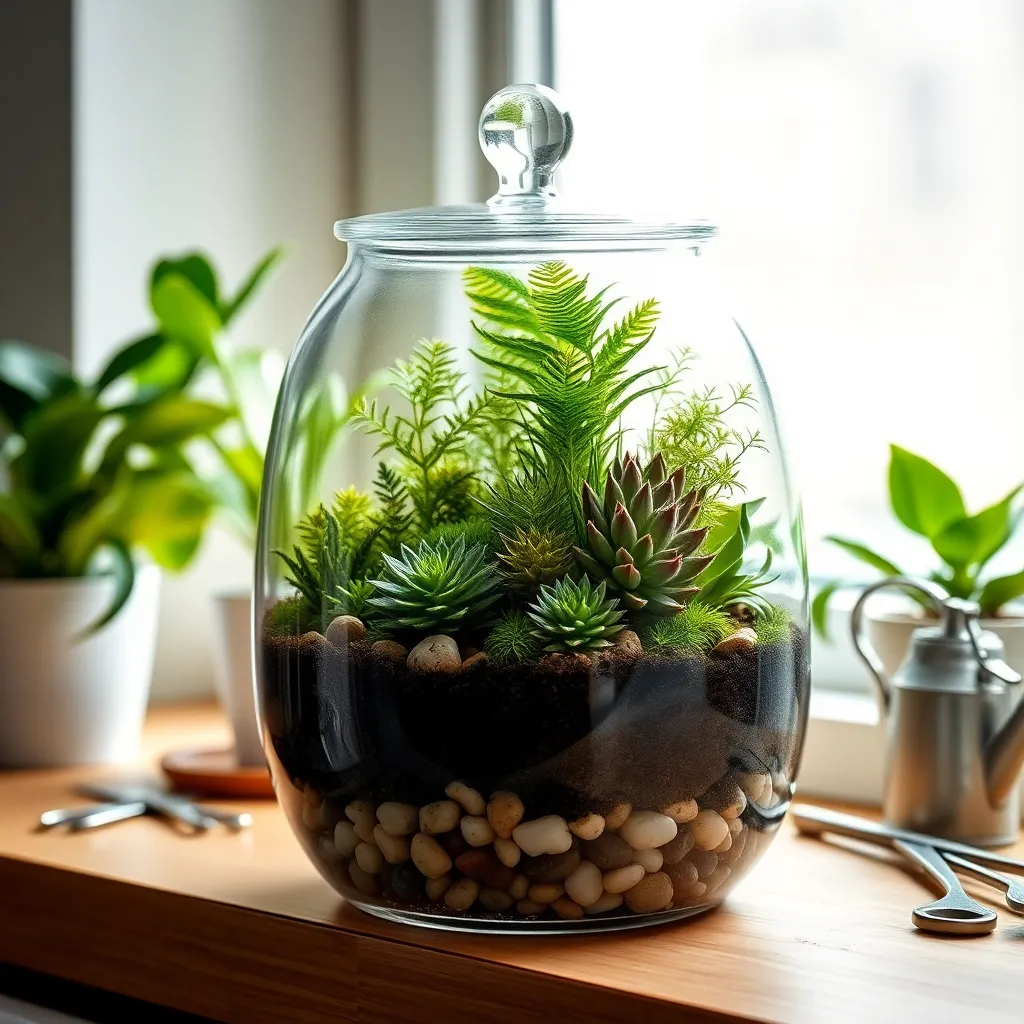
Creating a DIY indoor plant terrarium is a delightful way to bring nature into your home. These mini ecosystems require minimal maintenance and can be crafted to suit any aesthetic and space.
To start, you’ll need a clear glass container, some small stones or gravel, activated charcoal, potting soil, and a selection of small plants. Succulents, mosses, or ferns are ideal choices due to their low water requirements and compact size.
Begin by placing a layer of stones at the bottom of the container for drainage, followed by a thin layer of activated charcoal to keep the environment fresh. Add about two inches of potting soil, creating a gentle slope for visual interest and effective water drainage.
When selecting plants, ensure they have similar light and moisture requirements. Arrange them thoughtfully, considering their growth patterns and leaving space for air circulation and potential growth.
Water your terrarium sparingly, as overwatering is a common mistake. A light misting every few weeks or when the soil feels dry is usually sufficient, especially for succulents.
Place your terrarium in indirect light to avoid overheating and ensure it thrives. For a more advanced touch, consider adding decorative elements like small figurines or stones to personalize your mini garden.
Growing Microgreens Year-Round
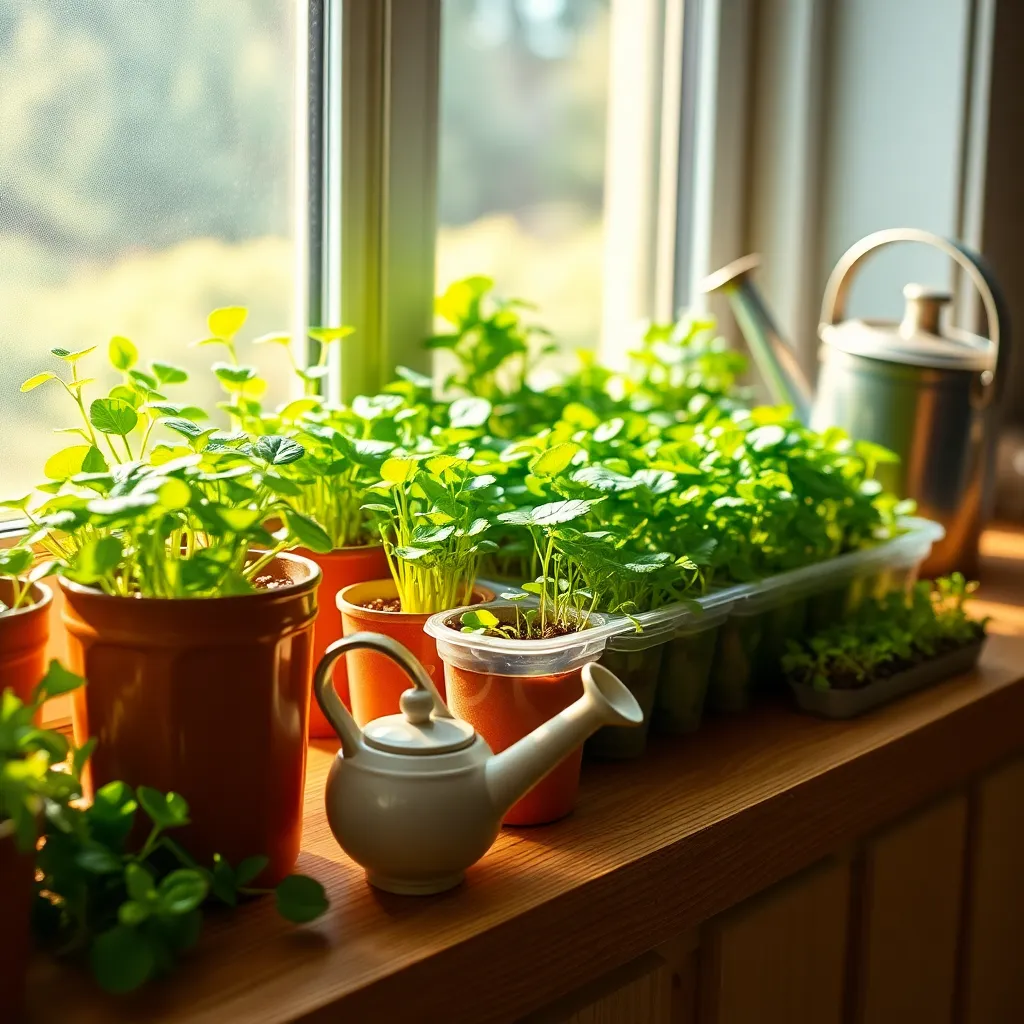
Growing microgreens year-round is a delightful project that can be easily managed with minimal space and effort. These nutrient-packed greens thrive on a sunny windowsill or under grow lights, making them perfect for any indoor setting.
To start, choose seeds such as sunflower, radish, or broccoli, which are popular and easy for beginners. Use a shallow tray filled with a seed-starting mix or a soilless medium, ensuring excellent drainage and aeration for the seeds.
Water your microgreens gently using a spray bottle to keep the soil consistently moist, but avoid over-watering, which can lead to mold. Typically, microgreens are ready to harvest in just 7 to 21 days, depending on the variety, providing quick and rewarding results.
For advanced gardeners, consider experimenting with different seed varieties or creating custom blends for unique flavors. Using a small fan can improve air circulation, reducing the risk of mold and encouraging sturdier growth.
Innovative Container Gardening Ideas
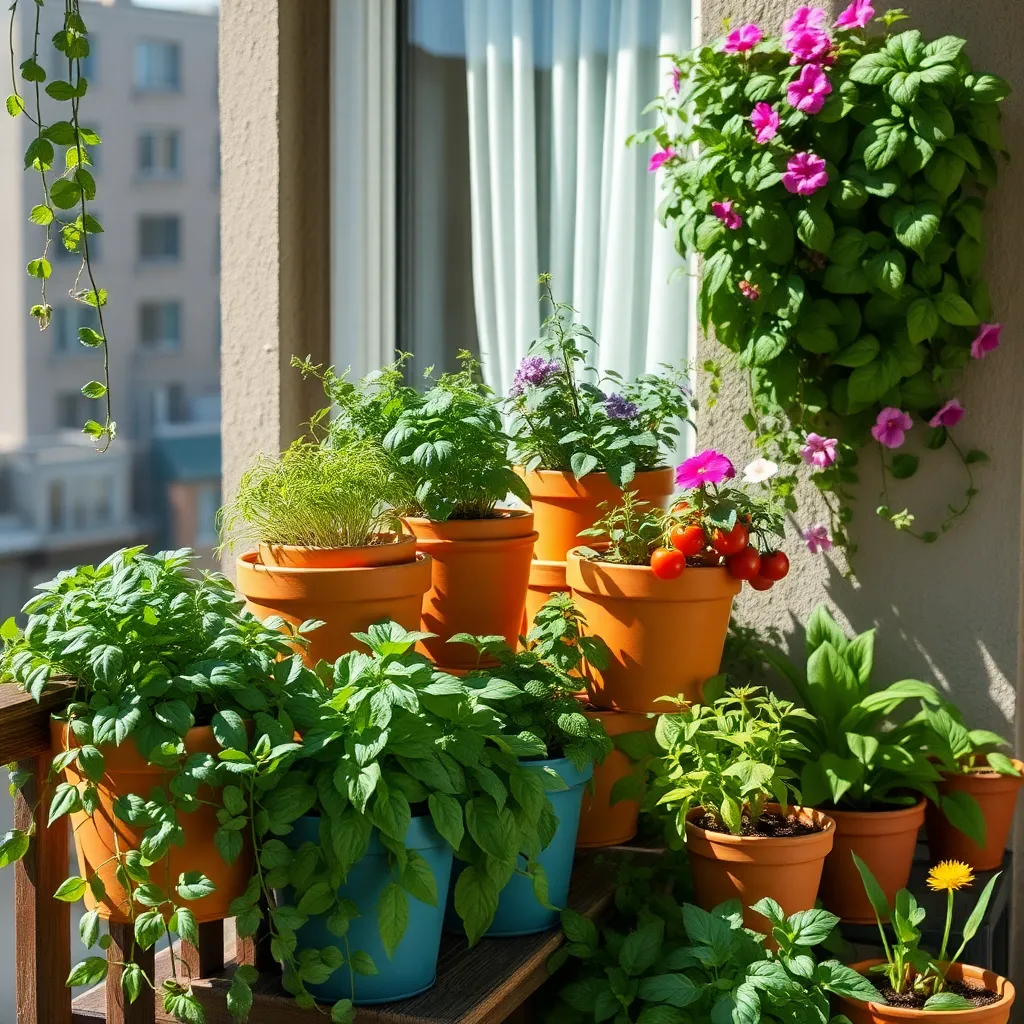
Container gardening offers a versatile way to grow plants, making it perfect for small spaces or indoor environments. Consider using unconventional containers such as old teapots, baskets, or even wooden crates, which can add a unique aesthetic to your indoor garden.
When selecting containers, ensure they have adequate drainage holes to prevent root rot. Line the bottom of your containers with pebbles to improve drainage and aeration, essential for healthy plant roots.
Choose a high-quality potting mix rather than garden soil; it provides better aeration and drainage. A soilless mix with added perlite or vermiculite can be particularly beneficial for maintaining moisture balance in containers.
Watering needs vary depending on the plant species and container size. As a general rule, check the top inch of soil for dryness before watering, and aim to keep the soil consistently moist but not waterlogged.
Caring for Indoor Fruit Trees
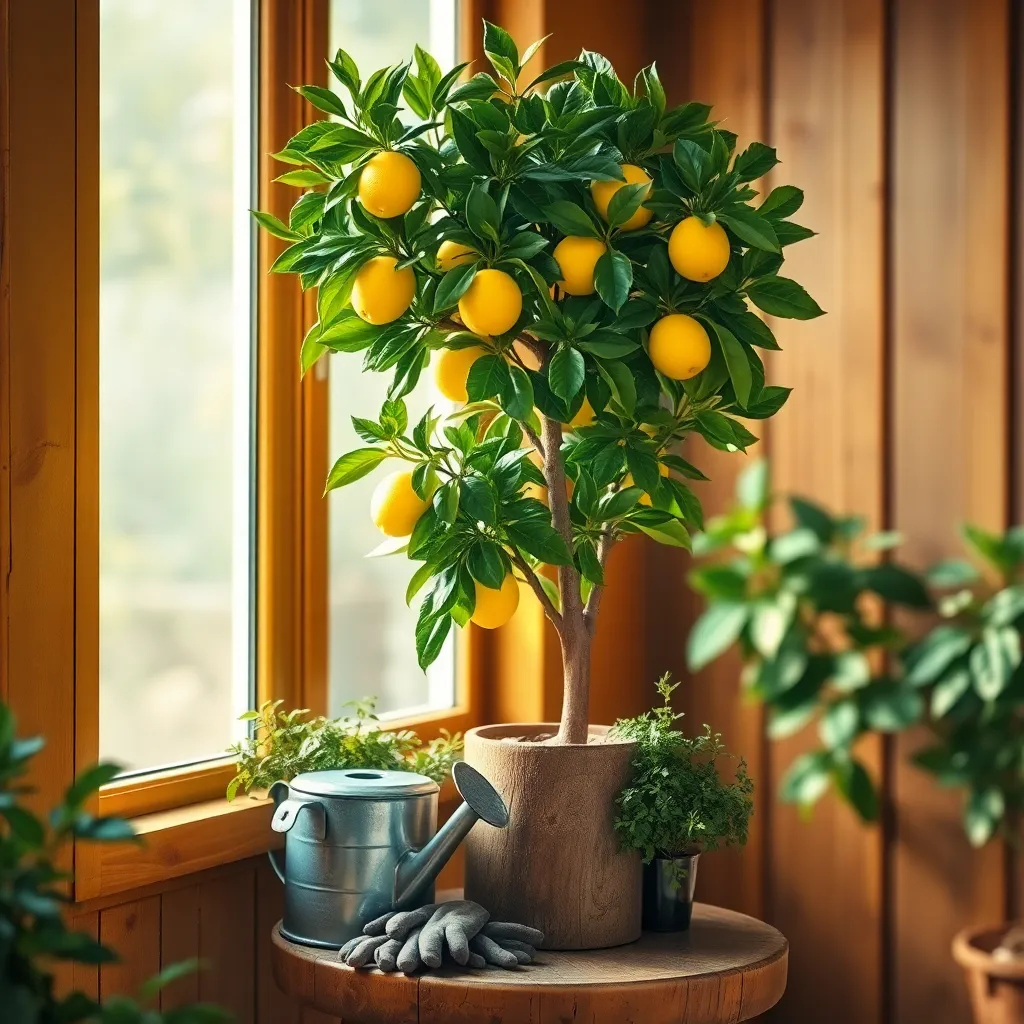
Growing indoor fruit trees can be a rewarding project that brings both beauty and productivity to your living space. Begin by choosing dwarf varieties of fruit trees like lemon, fig, or kumquat, which are well-suited for indoor environments.
For optimal growth, ensure your fruit trees receive at least six hours of direct sunlight daily, ideally near a south-facing window. If natural light is limited, consider using grow lights to supplement their needs.
Soil quality is crucial for the health of your indoor fruit trees; use a well-draining potting mix enhanced with perlite or sand for aeration. Regularly check the soil moisture, and water only when the top inch feels dry to avoid overwatering.
Feeding your indoor fruit trees with a balanced, slow-release fertilizer every six to eight weeks during the growing season will help maintain their vigor. Pruning is also essential to keep the trees manageable and encourage better fruit production. Focus on removing any dead or overcrowded branches.
Lighting Solutions for Indoor Growth
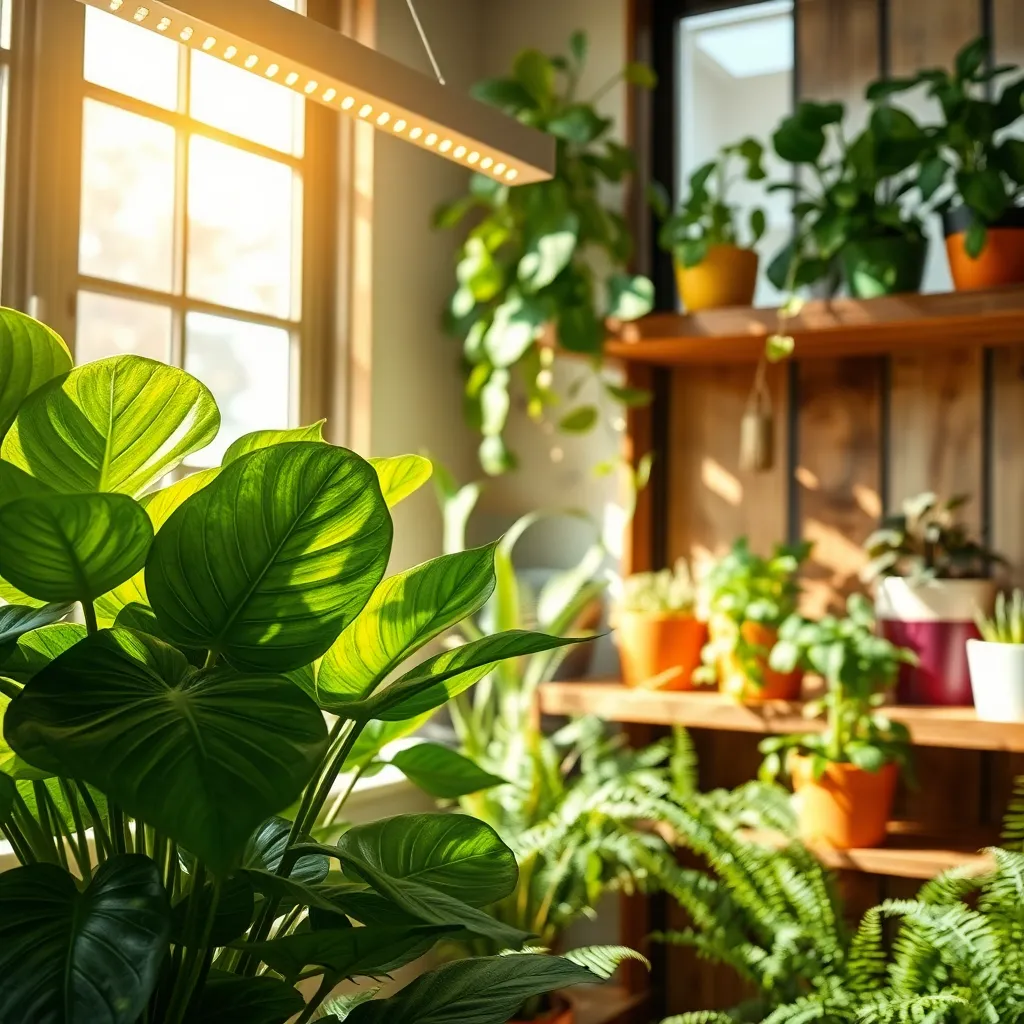
When it comes to indoor gardening, lighting is one of the most crucial elements for plant growth. Natural sunlight is often insufficient, especially in rooms with limited window exposure, making artificial lighting a valuable tool.
Consider using LED grow lights as they are energy-efficient and emit a spectrum of light that mimics natural sunlight. Position these lights approximately 6 to 12 inches above your plants to ensure they receive adequate light without overheating.
For those just starting, a simple setup with compact fluorescent lamps (CFLs) can suffice for low-light tolerant plants like pothos or snake plants. Ensure you provide at least 12-16 hours of light per day to mimic the natural daylight cycle.
Advanced gardeners may invest in full-spectrum LED systems that support all stages of plant growth, from seedlings to flowering. Adjust the height and intensity of the lights as your plants grow to optimize their exposure and encourage healthy development.
Conclusion: Growing Success with These Plants
In exploring the “10 Productive Indoor Gardening Projects,” we’ve delved into nurturing not just plants, but the very roots of our relationships. From the patience cultivated in caring for delicate seedlings to the mutual growth observed in shared gardening tasks, each project offers a unique opportunity to strengthen bonds. The importance of communication, trust, collaboration, adaptability, and shared goals were at the core of our gardening journey. These concepts mirror the essential elements needed for thriving relationships.
As an immediate next step, choose one project to embark on with a loved one. Whether it’s creating a windowsill herb garden or designing a terrarium, let it be a catalyst for deeper connection. Don’t let this moment of inspiration fade; bookmark this article now so you can revisit these ideas and continue to nurture your relationship garden.
Remember, just as plants need consistent care, so do relationships. With every seed planted, you’re sowing the promise of a flourishing partnership. Your commitment today can lead to a harvest of love and understanding tomorrow. Here’s to growing together in harmony and joy!

